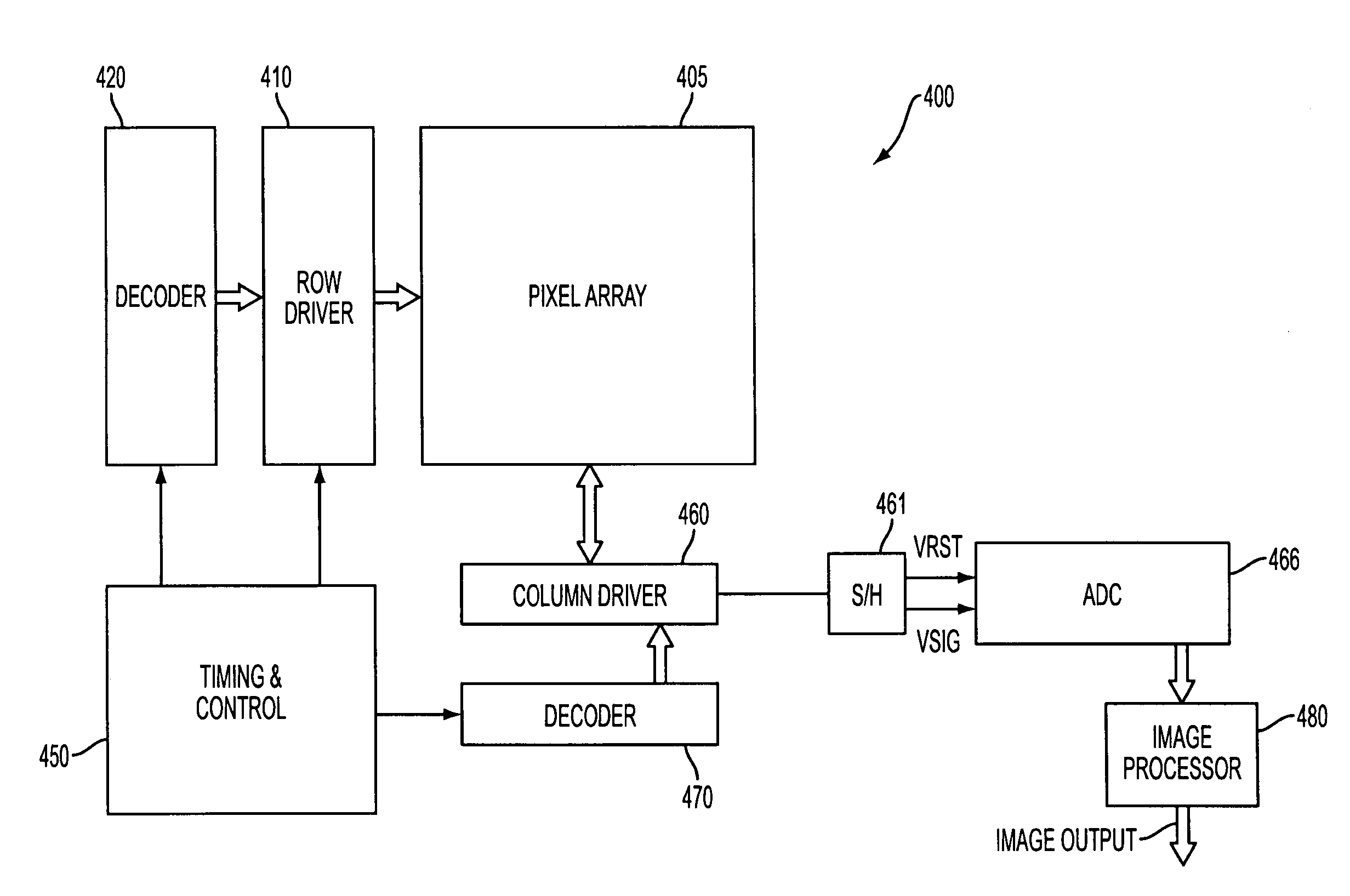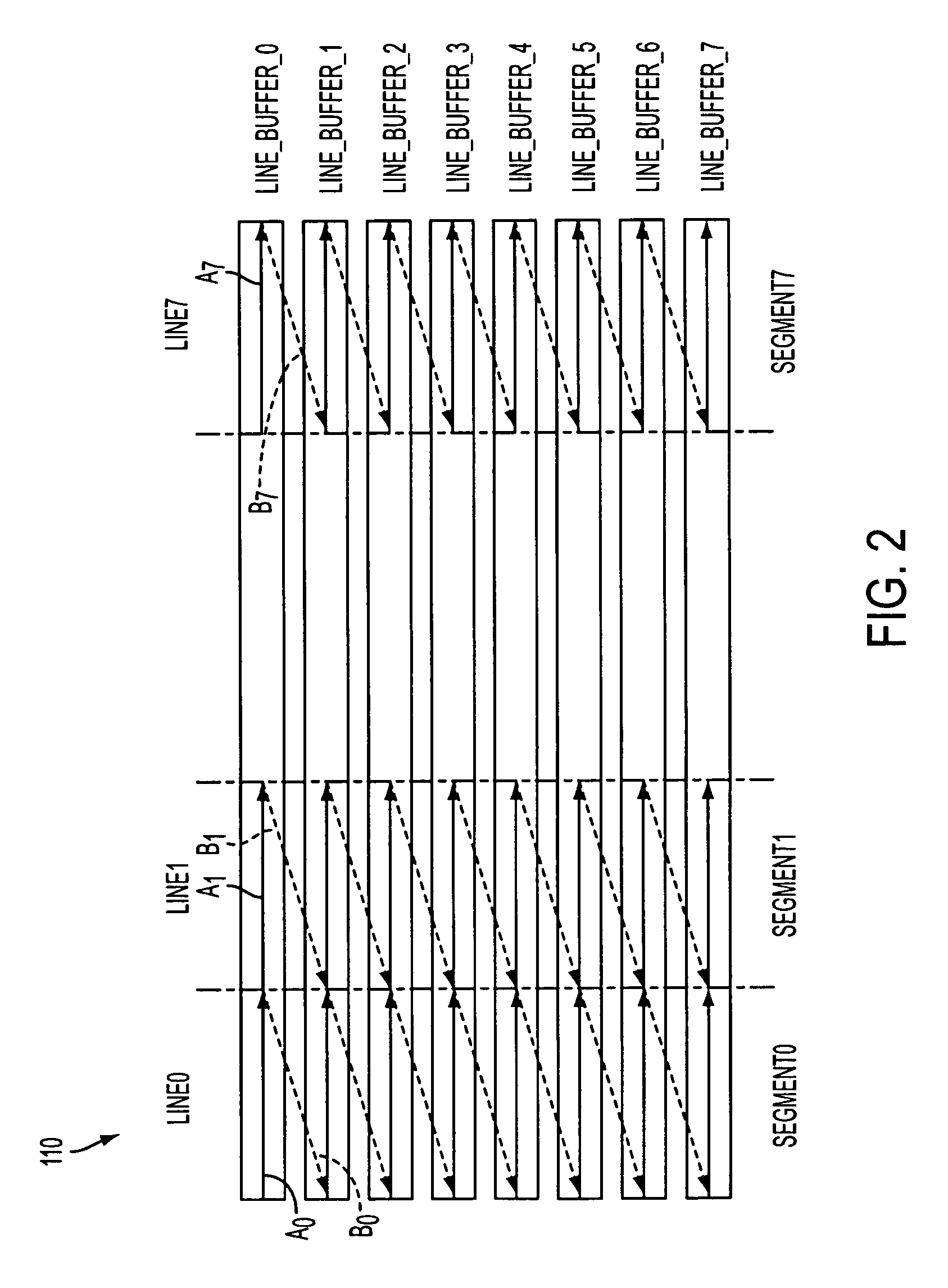Scan line to block re-ordering buffer for image compression
a line blocker and buffer technology, applied in the field of image compression, can solve the problems of occupying valuable space in the system, increasing the cost of the system, and limited lossless compression in many applications
- Summary
- Abstract
- Description
- Claims
- Application Information
AI Technical Summary
Problems solved by technology
Method used
Image
Examples
Embodiment Construction
[0015]The present invention relates to data compression for a real-time application. Although the invention is described as being used in a real-time imager application, for the compression of real-time image data, it should be appreciated that the invention will apply to other real-time applications that require the compression of real-time data. In addition, the invention is described, for exemplary purposes only, as using JPEG forms of compression / encoding. It should be appreciated, however, that the novel aspects the invention are not limited to the type of compression / encoding used on the data described herein.
[0016]As set forth above, one form of compression used in real-time applications such as e.g., imagers, is JPEG encoding. There are multiple forms of JPEG encoding that could be used to compress data such as e.g., image data. JPEG encoding may also be used on color image data. In JPEG encoding the data to be compressed / encoded is grouped into multiple minimum coded units ...
PUM
 Login to View More
Login to View More Abstract
Description
Claims
Application Information
 Login to View More
Login to View More - R&D
- Intellectual Property
- Life Sciences
- Materials
- Tech Scout
- Unparalleled Data Quality
- Higher Quality Content
- 60% Fewer Hallucinations
Browse by: Latest US Patents, China's latest patents, Technical Efficacy Thesaurus, Application Domain, Technology Topic, Popular Technical Reports.
© 2025 PatSnap. All rights reserved.Legal|Privacy policy|Modern Slavery Act Transparency Statement|Sitemap|About US| Contact US: help@patsnap.com



